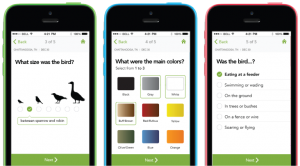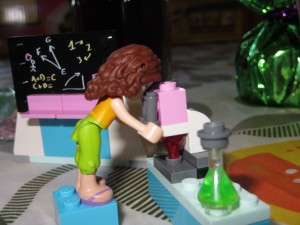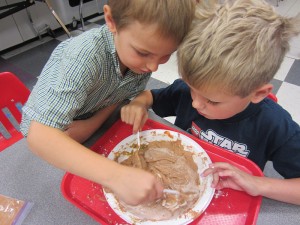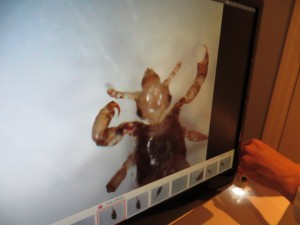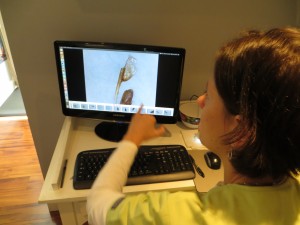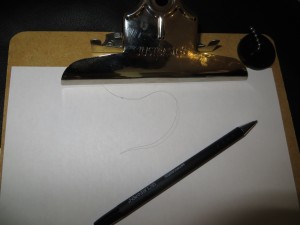Category:The World Around Us’
Shoe Box Solar Viewer for Watching a Solar Eclipse
- by KitchenPantryScientist
Here’s how to make simple solar viewers to indirectly view an eclipse.
NEVER look directly at the sun, since you can permanently damage your retinas (the light sensors on the back of your eyeballs.)
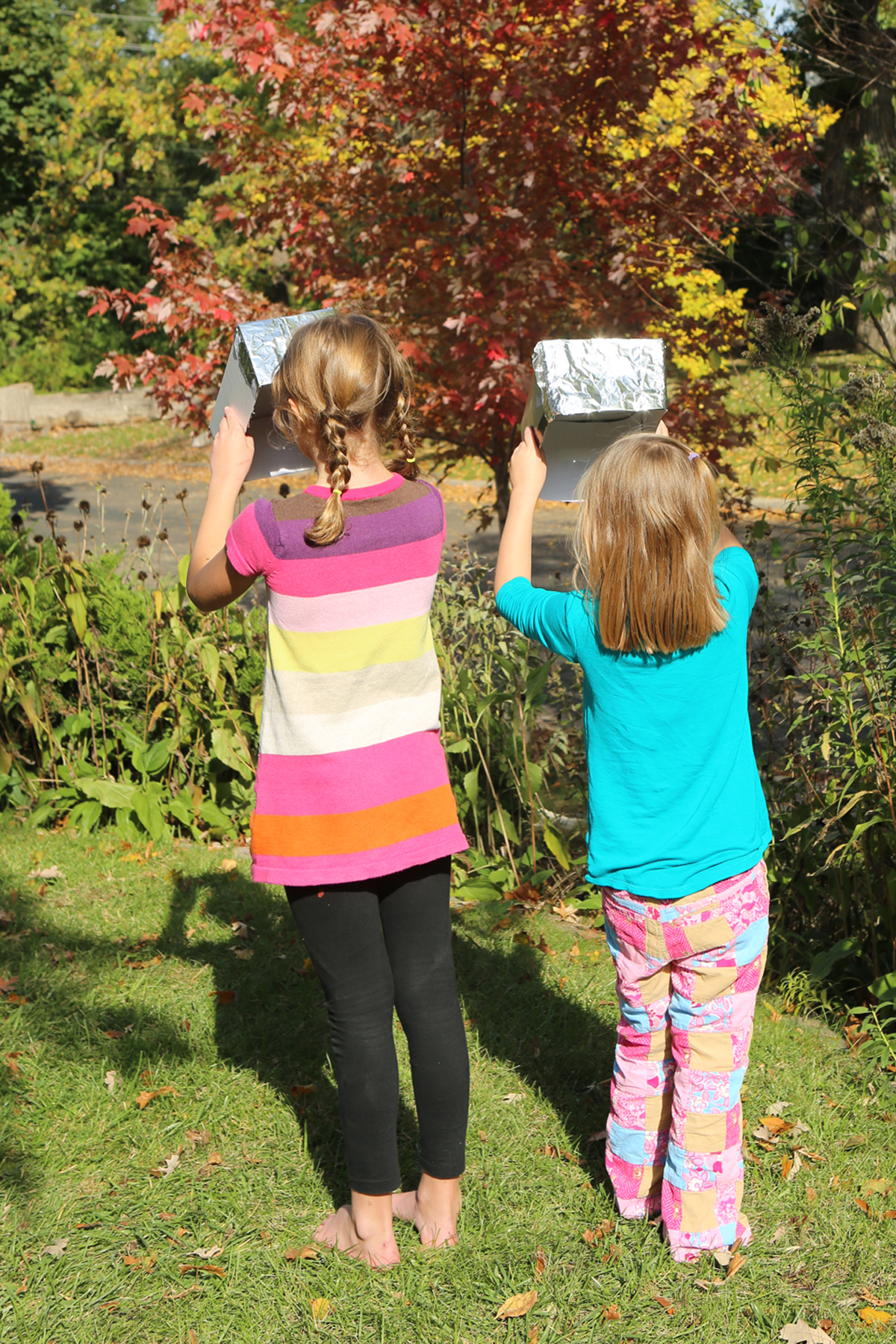
You can safety view the sun (and therefore a solar eclipse) using a shoe box by standing with the sun BEHIND you. All you need is a shoe box without a lid, a piece of white paper, aluminum foil, a pin and tape. It’s perfect for viewing a solar eclipse, like the one coming up this afternoon. It will be visible from around 4:30 CST until 6:00 PM CST here in Minnesota!
A solar eclipse happens when the moon passes between the sun and the earth, blocking the sun from view.Go to this eclipse calculator to see when and where you can best view the eclipse with your viewer! Here in Minnesota, we’ll see a partial eclipse.
First, tape white paper over one end of the shoe box (on the inside.) This is your viewing screen.
Then, cut a big notch out of the other end of the shoe box and tape aluminum foil over it.
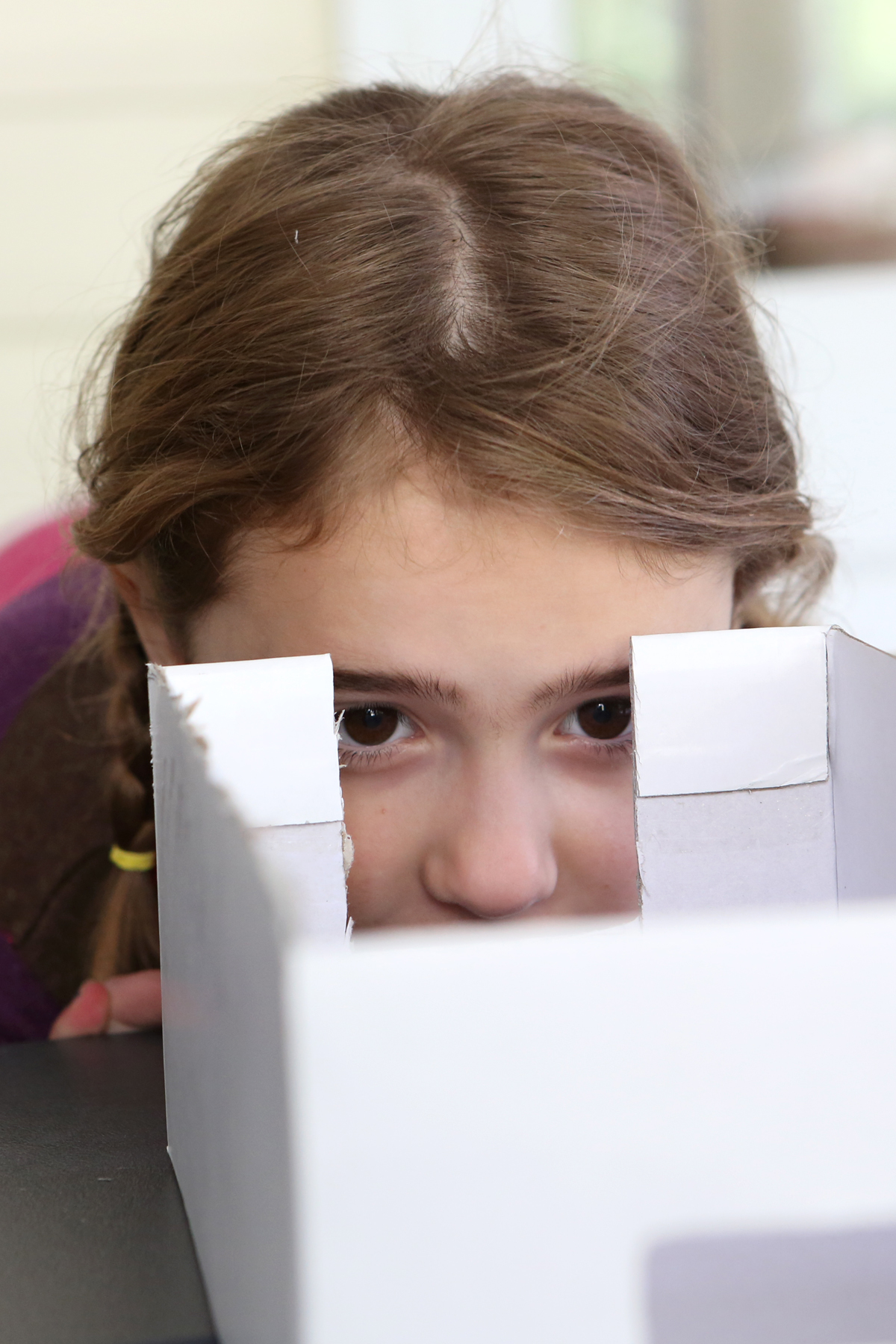
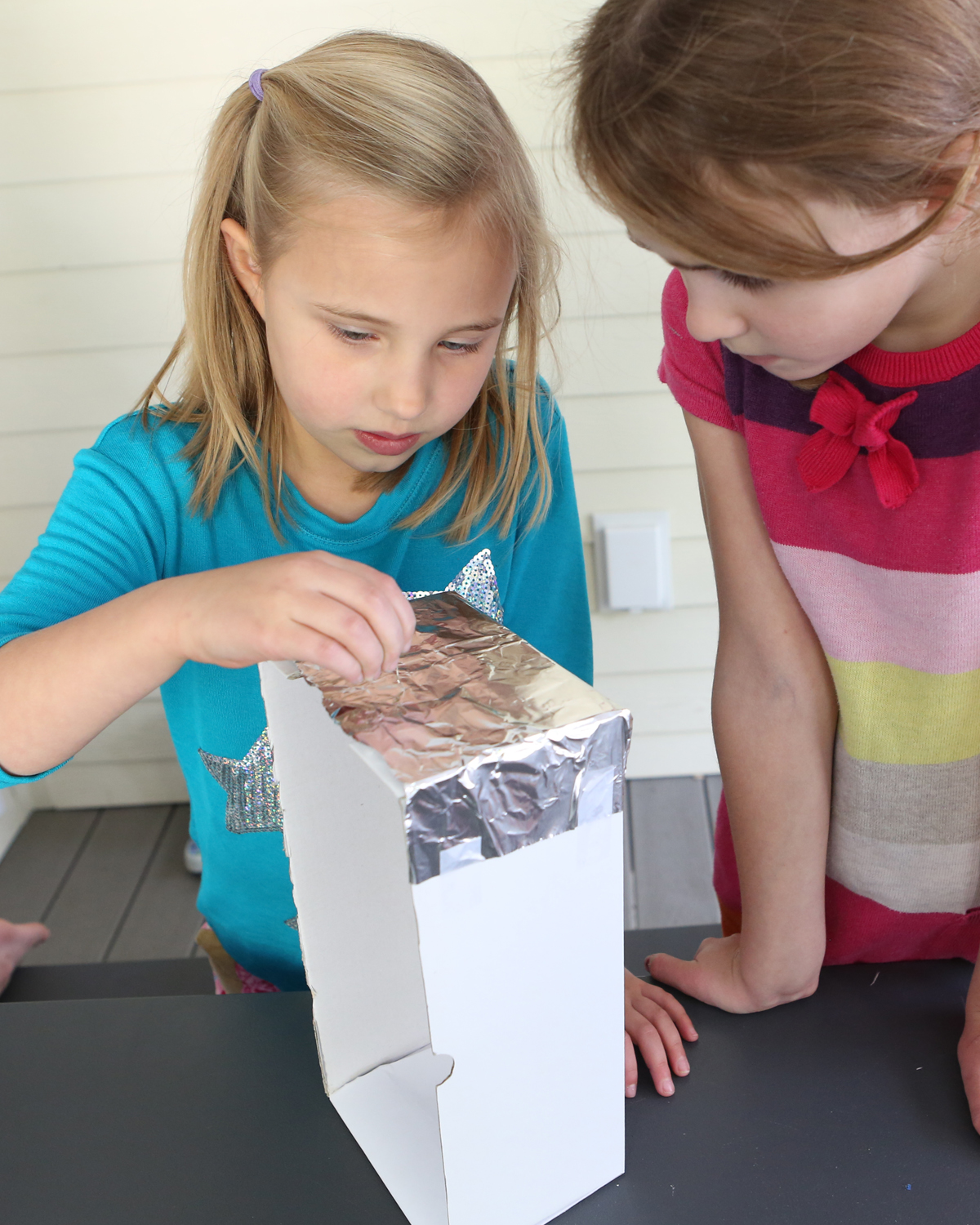
Use a pin to poke a hole in the center of the foil. If you mess up, you can always put new foil on and try again. The smaller the hole, the better the focus, but we made ours a little bigger than the actual size of the pin.
Now, stand with the sun BEHIND you. (See photo at top of post. The sun is behind the girls, high in the sky.) NEVER LOOK AT THE SUN THROUGH THE PINHOLE ITSELF.
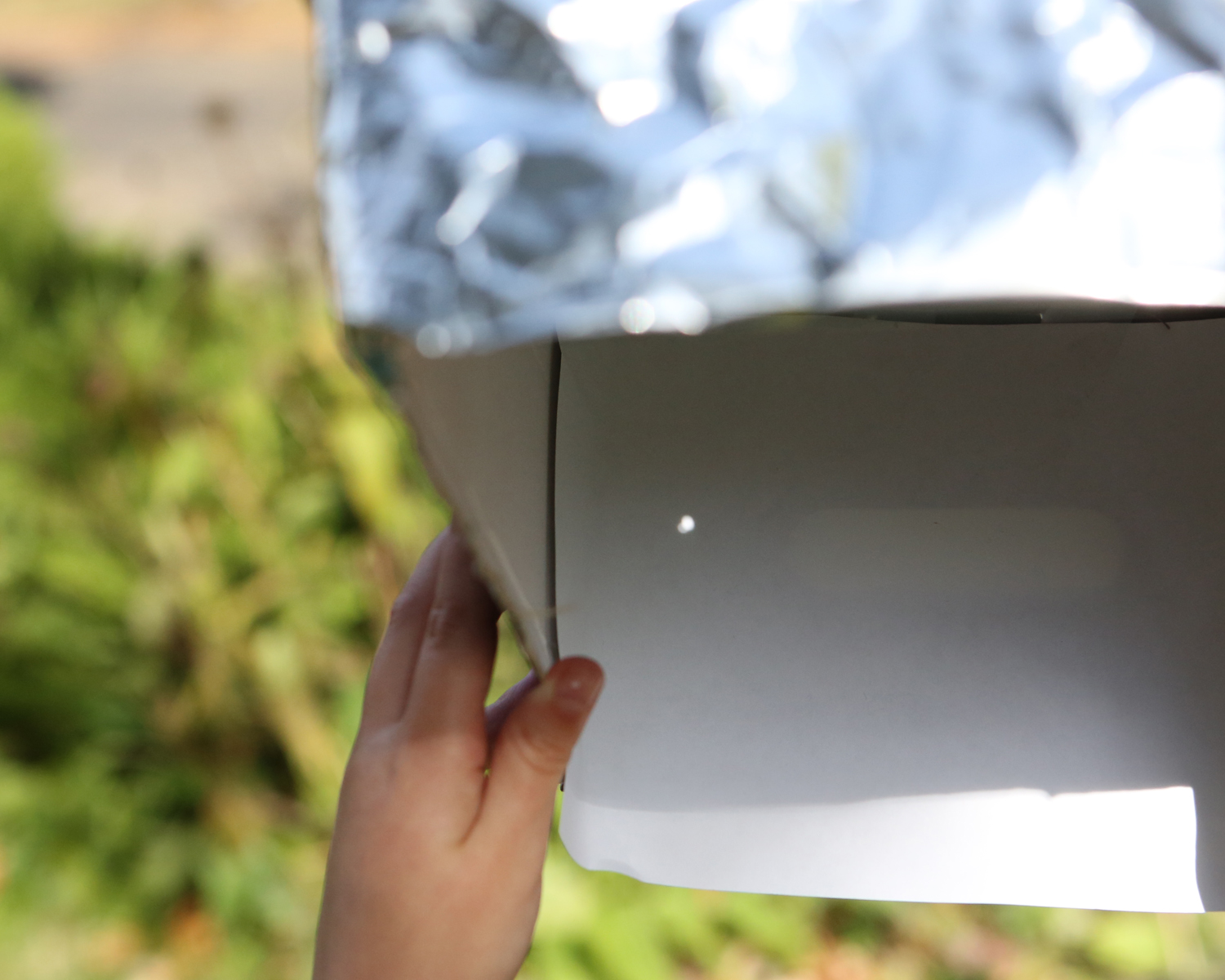
Hold the box upside down so the pinhole is pointed at the sun behind you. The foil should be behind your line of sight so it’s not reflecting the sun in your eyes. Light rays from the sun will shine through the pinhole and project an (upside down) image on the white paper.
Practice on a sunny day (or when the sun peeks out between the clouds) so that you know what to do when it’s time for the eclipse. Small children should be supervised so they don’t try to look directly at the sun.
You can do the same thing using two white index card, poking a hole in one you hold nearest to you and projecting the image on the one you hold away from you (with the sun behind you.)
Or, if you’d rather order “eclipse glasses”, here’s a link for where to buy AAS-approved and tested solar viewers.
If you’re interested in projecting a larger image of the sun, try making a solar viewer from binoculars, a tripod and a white piece of paper. Click here for directions!
Enjoy! Watching an eclipse in the 70s after my dad came to school and helped us all make these boxes is one of my earliest “science” memories!
Technology and Nature: What’s That Bird?
- by KitchenPantryScientist
Last week, the kids and I saw a bright red bird with a blue head. Baffled, I pulled out my favorite bird identification app: Merlin Bird ID, from the Cornell Lab of Ornithology. The app is free, available on the App Store and Google play, and much of the data in the app has been collected by citizen scientists, like you and me!
To use the app, you simply answer 5 simple questions about the bird you see and the app draws on a wealth of data to help you identify the bird. It comes up with a list of likely matches, and you choose the bird you’re looking at to learn more about it, and even listen to a recording of its song.
Normally, we can quickly identify the bird we’re stalking using the app, but the blue-headed red bird was tricky, so we went online to do more research. Merlin Bird ID suggested that it might be a cardinal, so we did a search for blue headed cardinals and discovered that we’d seen a bald-headed cardinal. It seems that some cardinals and blue jays molt all their head feathers at once, leaving their bluish skin exposed.
Cool.
Citizen Science
- by KitchenPantryScientist
Want to help scientists out with real research projects? It just takes a click of the mouse to get involved with experiments that may someday be published in scientific journals and make a difference in the world.
Scistarter.com is a great starting point to help you find a project that fits your interests.
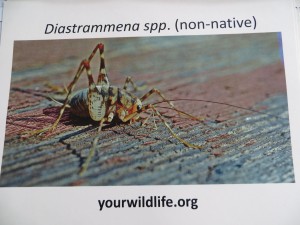
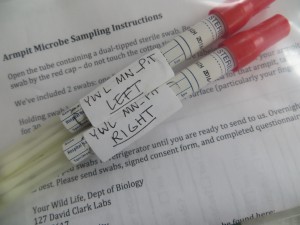
To get involved in Citizen Science, you don’t need a degree or any scientific background at all. It’s not expensive. You might just need a plastic bag or a pair of binoculars. Depending on your interest, you can do anything from taking a video of someone playing with your dog, collecting ants,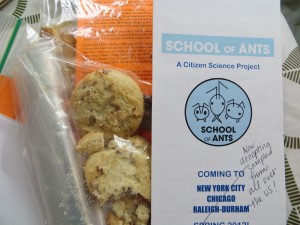 recording severe weather in your own back yard, to swabbing for microbes in your home, school or sports stadium. You can even keep track of when your neighborhood outdoor hockey rink freezes and thaws or look for Camel Crickets in your basement.
recording severe weather in your own back yard, to swabbing for microbes in your home, school or sports stadium. You can even keep track of when your neighborhood outdoor hockey rink freezes and thaws or look for Camel Crickets in your basement.
Who knows? You might discover a new ant species, learn something new, or even participate in a study that helps make the world a better place.
Spring Break Boredom-Busters on KidScience App
- by KitchenPantryScientist
Whether you’re home or away, science can make any vacation more fun. You can collect data for real citizen science research projects by searching SciStarter.com or do your own experiments. KidScience app, based on the science projects on this website, puts fun science experiments at your fingertips on your iPhone, iPod Touch or iPad, no matter where you are.
I showed Kare11 viewers three of our favorite KidScience experiments: Red Cabbage Litmus Paper, Fizzy Balloons and Marshmallow Slingshots (using stuffed animals like Angry Birds to learn a little about the conservation of energy. Click here to watch the TV segment.
How will you mix a little science into your spring break?
Amazing Flu Virus Animation
- by KitchenPantryScientist
Cover your cough and wash your hands! Later this week, we’ll post an experiment that illustrates how far the biggest drops from your sneeze or cough can travel. (The smaller ones can go much further.)
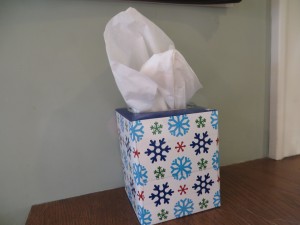
Here’s an amazing animation created by medical animator David Bolinsky and narrated by NPR’s Robert Krulwich that shows you how a flu virus can trick a single cell into making a million more viral particles that can go on to infect other cells, until your immune system stops them.
Creative Science: ScienceOnline
- by KitchenPantryScientist
In a few weeks, I’ll be heading to North Carolina to attend Science Online 2013, an “un-conference” of online science communicators, writers, artists and video-makers. It will be next to impossible to choose which sessions to attend, since people will be talking about everything from writing science narrative to drawing science comics and using science to write fiction. I’ll be co-moderating a session on writing for kids with Elizabeth Preston, Editor of Muse magazine (which my 12-YO loves) and giving a short talk on why I made KidScience app.
To make the meeting even more fun, there will be a Cyberscreen film festival and an art show for participants, which inspired me to pull out my paintbrushes from college and do a quick “self portrait with microbes.” It’s been so much fun to paint again that I might go buy another canvas today and paint a “Still Life with Bacteria.”
![]()
My musician friend helped me make my silly “science song” sound amazing so I can use it on my website and for videos like the one above that I made for KidScience app.
How do you mix up science, music, film and art? Do you know any science project that can morph into art projects, like red cabbage litmus paper collages or photographing tie-dye milk patterns? I’d love to hear your ideas! I’ll let you know about the cool things I learn and fun resources I discover at ScienceOnline in early February!
What is Influenza and how does your flu shot protect you?
- by KitchenPantryScientist
As I wrote this post, Minnesota went from orange to red on the Center for Disease Control’s FluView map. Click here to see how active viral influenza is in your area.
This season’s manifestation of the flu (H3N2) is currently burning it’s way though the Twin Cities, sending droves of tough Minnesotans coughing and shivering to their beds. Five people have already died from the flu, two of them teenagers. Stomach bugs, caused by other viruses, are making their rounds too, but when health care workers and scientists talk about flu, they’re talking about viral influenza.
How can a shot help prevent a horrible case of the flu and why do you need a new one every year? Can you avoid the flu by washing your hands?
It helps to understand a little bit about the influenza virus. Like I tell my nursing students: know your enemy and you’ll have a better chance of outsmarting it!
Viruses are tiny packages of genetic material (DNA or RNA) that can infect every type of life on Earth, from bacteria to humans. They’re not considered living, because they can’t make new copies of themselves outside their host organism. In fact, to replicate themselves, they have to hijack their host’s cellular machinery. Essentially, viruses are extremely tiny parasites, so small you can’t even see them under a microscope.
To cause an infection and make you sick, the influenza virus has to get into your cells, use your cells to make lots of new copies of itself, and then escape from those cells so the new viral particles can go out and infect other cells.
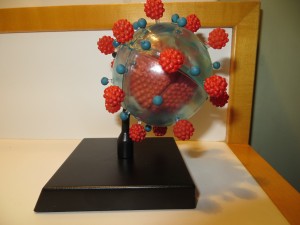
Protein “spikes” on the surface of the influenza virus, called hemagglulutinin and neuraminidase are used by the virus to enter and exit host cells.
The influenza virus is made up of eight segments of RNA, surrounded by a protein coat and an envelope. Two types of protein “spikes” that jut out of the viral envelope are called hemagglutinin and neuraminidase. Hemagglutinin (H) helps the influenza virus attach to host cells, and neuraminidase (N) helps burst the host cell open so the new viral particles can escape. Flu strains are names for these proteins, which is why you see influenza called H1N1, and so on.
These H and N proteins undergo small changes all the time. Each year, health workers and scientists study flu strains around the world by looking at their H and N proteins, among other things. If one of the proteins has changed a little bit, they will give it a new strain name (like H3N2.) Pharmaceutical companies make new vaccines every year so that your body can recognize the new strains with the new H and N proteins to fight them off.
A flu shot primes your body’s immune system to fight the flu virus and get rid of it. How well the vaccine works each year depends on a number of thing, including how well scientists guessed about which strains would be circulating and whether those strains have undergone other changes. How well your vaccine protects you personally depends on variables including what flu strain you’re exposed to, your age, whether you have another viral or bacterial infection at the same time, and even how strongly your individual immune system reacts.
What can you do to minimize your risk of getting sick with the flu? Get your flu shot! Even if it doesn’t work perfectly, it will give your immune system a boost against the virus. The flu is spread by coughing and sneezing and on surfaces like doorknobs and other surfaces. Try to stay away from people who are coughing. Wash your hands frequently and keep them away from your eyes, mouth and nose, which are portals of entry for microbes. Eating right and getting enough sleep will bolster your immune system so that if you do get the flu, you may be able to fight it off faster and better.
Although you can’t grow viral cultures outside a lab, you can make homemade petri dishes to grow fungi and bacteria from your hands. Try a hand-washing experiment where you label four petri dishes #1-#4. Touch plate #1 with unwashed fingers, wash those fingers with water alone and touch plate #2, wash the same fingers with soap and water and touch plate #3, and finally wash one last time with hand sanitizer and touch plate #4. Let the cultures on the plates grow for several days and you’ll see for yourself why it’s so important to wash your hands.
Preschool Science at SMM
- by KitchenPantryScientist
When I tell my kids we’re going to the science museum, the first thing they do is race up to their rooms to look through their rock collections. Even my twelve year old is not immune to this behavior.
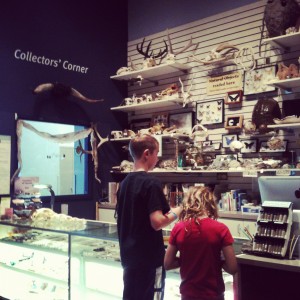
Since they were old enough to talk, the three of them have been bringing paper wasp nests, quartz crystals, empty Monarch chrysalises, fossils and other interesting finds to a hidden gem in the Science Museum of Minnesota: The Collector’s Corner. At this oasis of curiosities (tucked away in a corner of the Collections Gallery near the mummy,) kids can trade in their stuff for points, which allow them to “buy” other amazing items. The more science they know about the item they’re trading in, the more points they get. Luckily, they have a comfy couch for parents and grandparents to lounge on while they talk to the well-informed and friendly volunteers staffing the “Corner.”
The Science Museum of Minnesota is a great destination for those days when you don’t want to go outside, but you want to give your kids a chance to learn, explore and use their imaginations.
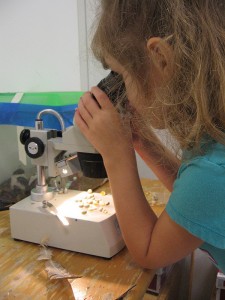
Every Tuesday, the Museum caters to the pre-K crowd with Preschool Playdates, where, if you purchase a regular price adult ticket, you receive a free child admission (ages 5 and under). Minnesota Children’s Museum members receive free Science Museum admission during Playdates.
These playdates include:
- Admission to the Science Museum’s exhibit galleries, packed with hands-on fun.
- Make & Take creations: Your child will use their imagination to engineer a project the museum developed especially for them!
- Special theater programs and demonstrations designed just for preschoolers.
- Parent’s guide to preschool activities and accommodations throughout the museum, including an introduction to the Collectors’ Corner trading post!
NASA Earth Science Week
- by KitchenPantryScientist
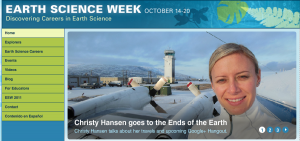 As you may know, I’m a huge NASA fan and am constantly amazed at the great educational opportunities they have available for everyone. Next week is Earth Science Week, and you can celebrate by hanging out with NASA scientists online. They’ll host a full slate of social media activities – Twitter Chats, Google Hangout, Reddit, blogs – where students and teachers can connect with some amazing folks. If you can’t participate in the live event, teachers and students can email questions in advance, and come back to the NASA Earth Science Week after the live event to see if their question made the live event. Details on each event (including how and where to email questions) is here: http://climate.nasa.gov/eswSite/eswEvents/
As you may know, I’m a huge NASA fan and am constantly amazed at the great educational opportunities they have available for everyone. Next week is Earth Science Week, and you can celebrate by hanging out with NASA scientists online. They’ll host a full slate of social media activities – Twitter Chats, Google Hangout, Reddit, blogs – where students and teachers can connect with some amazing folks. If you can’t participate in the live event, teachers and students can email questions in advance, and come back to the NASA Earth Science Week after the live event to see if their question made the live event. Details on each event (including how and where to email questions) is here: http://climate.nasa.gov/eswSite/eswEvents/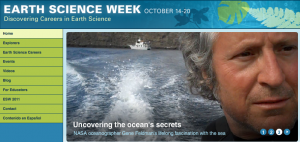
Below is the official announcement, if you’d like to read more, or share it with friends, teachers and homeschoolers:
Celebrate Earth Science Week: Connect with NASA Earth Explorers!
Event Dates: Oct. 14-20, 2012
Under the theme “Discovering Careers in the Earth Sciences,” this year’s Earth Science Week will focus on this very topic: the story of the Earth Explorers who contribute to our understanding of the planet. As a leader in Earth science research and applications, NASA plays a key role in this annual celebration. The American Geosciences Institute, or AGI, has organized this event since 1998.
During Oct. 14-20, 2012, students of all ages can connect to an incredible group of NASA Earth Explorers — from scientists and engineers, to multimedia producers, educators and writers. Find out about their careers, why and how they study the planet and what their typical day is like. Blog posts, Google+ Hangouts and Twitter chats, as well as a webinar and radio interview in Spanish, are just some of the media activities that will allow explorers to tell their stories. You can directly participate by asking questions during the live events or by sending in questions beforehand.
The current schedule of Earth Science Week events includes:
— Tuesday, Oct. 16, 1-2 p.m. EDT — Twitter Chat with polar scientist Thorsten Markus
— Tuesday, Oct. 16, 1-2 p.m. EDT — Univisión Radio interview with scientists Erika Podest and Miguel Román (in Spanish)
— Wednesday, Oct. 17, 1-2 p.m. EDT — Google+ Hangout with Operation IceBridge scientist Christy Hansen, on location near Antarctica
— Wednesday, Oct. 17, 4-5 p.m. EDT — Webinar with Aquarius engineers (in Spanish)
— Wednesday, Oct. 17, 6-7 p.m. EDT – Reddit interview with oceanographer Josh Willis
— Thursday, Oct. 18, noon-1 p.m. EDT — Twitter chat with atmospheric research scientist Erica Alston
In addition, on Oct. 18, the many contributions of women at NASA to Earth science will be highlighted as part of Female Geoscientist’s Day. Together with the NASA Earth Science Week website, the Women@NASA blog will feature three remarkable Earth Explorers.
Visit the 2012 NASA Earth Science Week website (http://climate.nasa.gov/esw2012) for a collection of articles, event information, blog posts, videos and other educational resources in English and Spanish.
Visit the Women@NASA Blog page: http://blogs.nasa.gov/cm/newui/blog/viewpostlist.jsp?blogname=womenatnasa.
Head Lice: How to avoid them and what to do if you get them.
- by KitchenPantryScientist
It’s overwhelming and disgusting to find a bug in your kid’s hair, but chances are pretty good that most parents will have this experience.(Some estimates say that 1-3% of grade schoolers are infested.)
It happened to me last year. I’d been expecting it, since we get a nurses note at least once a month that someone at school has lice. Since I hate the idea of putting pesticides on my kids’ heads, I decided to head over to the Minneosota Lice Lady to see what she could do. Thanks to her, the lice were removed, the rest of us were checked and declared lice-free, and I discovered that Gonner Asser is an expert on the tiny creatures. Since then, I’ve taken two microbiology classes of nursing students on field trips to visit her studio and learn about the tiny parasites.
We looked at nits (lice eggs) on hair (they look and feel like tiny brownish knots,) observed lice in all life stages under the cool microscope she has set up for kids and learned how to treat and avoid head lice. Here are my Cliff Notes, but she shared many other amazing facts and studies! Check out myths, facts and lice study references on her website.
1. Lice move from hair to hair, head to head and hygiene has little to do with it. In fact, they may like clean hair better! To avoid getting lice, long hair should be pulled back into braids or a bun so lice can’t use their claws to crawl from ponytail to ponytail while kids are head-to-head reading, talking or playing Temple Run.
2.Lice are a social disease. If your child has lice, chances are, they may have passed it to a friend, so don’t be shy about calling other parents and the school nurse. You’ll be doing everyone a favor. Likewise, if your kid’s friend has lice, check your own child carefully! They don’t always itch. A lice comb is the best way to check for the brownish nits and bugs, which can be seen by wiping the comb on a white paper towel.
3. Lice do not move from the environment to your head! If someone in your family has lice, you need to have that person treated and everyone else checked, but don’t bother bagging stuffed animals, pillows, etc. Lice cannot live away from the human head for long. They essentially dry up and die. Nits (lice eggs) have to be incubated 1/4 away from the scalp to hatch. Even a fever can kill them. Check out this study from a school where 450 students were infested and they didn’t find even one louse on classroom floors.
4.Pesticide head treatments often won’t kill lice. Many lice have developed resistance to these pesticides which often only kill 20-50% of lice and many of them contain chemicals which are considered hazardous. The best way to remove lice is with a lice comb and conditioner. Nits can take almost 3 weeks to hatch, so you have to keep combing and checking for a month to make sure all lice have been removed and no more are present to lay eggs. Or, go to a professional like the MN Lice Lady and make sure they’re willing to recheck and guarantee their treatment.
5. Finally, good news. Although they’re gross, lice don’t carry disease. Head lice only infest hair on the head, and they’re generally not even found on hair in hairbrushes. Kids tend to get them since they spend more time head-to-head, but braids and buns, and even sprays or shampoos with plant products (like tea-tree oil) can discourage them from climbing over.
